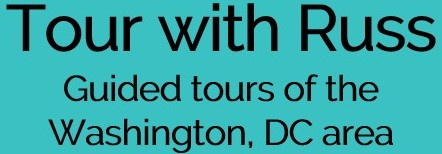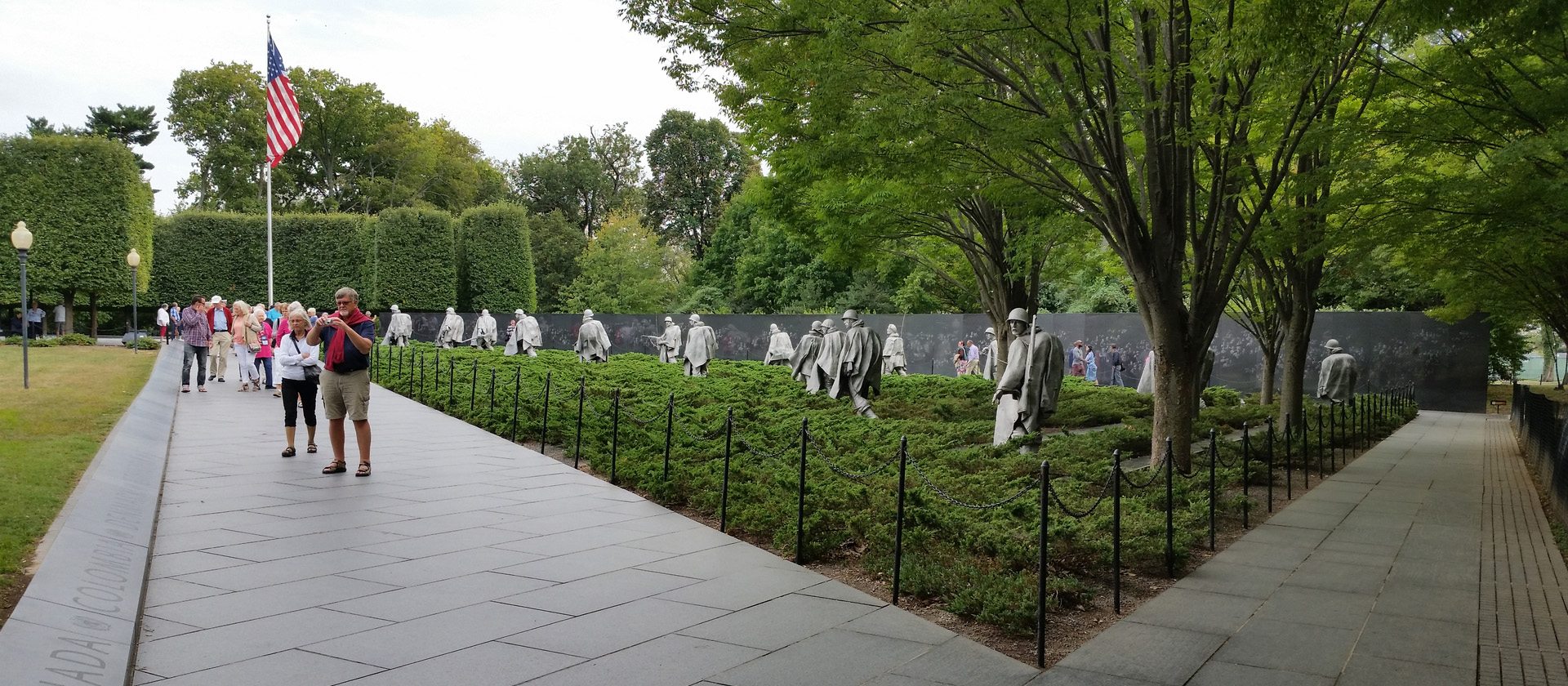Tours
Sample Tours
Washington Landmarks
expand
We will choose and prioritize the monuments and memorials, public buildings, and museums that you want to see.
Tour options:
- U.S. Capitol
- Library of Congress – Jefferson Building
- Supreme Court
- White House, Lafayette Park, Blair House, and Eisenhower Executive Office Building
- Washington Monument
- World War II, Jefferson, Franklin Delano Roosevelt, Martin Luther King, Jr., Korean War, Lincoln, Vietnam Veterans, Eisenhower, Iwo Jima, Pentagon 9/11, and Air Force memorials
Arlington National Cemetery
expandMount Vernon
expandOld Town Alexandria
expandWashington Neighborhoods
Anacostia
expandIn 1608, John Smith explored the forested area then inhabited by native Americans. English exploration led to settlement. The land was cleared and planted in tobacco raised by tenant farmers, indentured servants, and African slaves. In 1791, the area was included within the boundaries of the District of Columbia.
In 1854, Uniontown, the first planned suburb of Washington, was laid out. A few large, freestanding residences were constructed, but development languished until the 1880s after streetcars started crossing the Anacostia River. This spurred the construction of many modest, one- and two-story dwellings with a variety of interesting architectural details. By the turn of the 20th century, a thriving commercial district had developed along today’s Martin Luther King, Jr. Avenue and Good Hope Road. The Anacostia Historic District was created in 1978 to protect the area’s unique architecture and small town charm.
We can tour the Historic District and Cedar Hill, home of Frederick Douglass, 19th century African American abolitionist, suffragist, author, editor, and diplomat. The house, its furnishings, and artifacts are preserved so authentically that you will expect Frederick Douglass to step forth and greet you.
In Anacostia are many African American history and culture sites, Civil War fort sites, and parks with river access and great views of the city.
Georgetown
expandTour options:
Walk the promenade along the Potomac River at Washington Harbor and through Georgetown Waterfront Park. Great place to view the John F. Kennedy Performing Arts Center, Watergate, Theodore Roosevelt Island, Francis Scott Key Bridge, and people enjoying the waterfront. Bicycles, canoes, kayaks, and paddle boards can be rented.
Explore the Chesapeake & Ohio Canal Historic Park. The park preserves the remnants of a canal that was to connect Georgetown with the west, the land beyond the Appalachian Mountains. The canal was constructed as far as Cumberland, Maryland (184.5 miles) and operated from 1831- 1924. Today it is a place for recreation, to enjoy nature, and to learn more about the history and culture of the area.
Walk or ride the tree-lined residential streets and view picturesque rowhouses, single-family homes, and mansions in a variety of architectural styles. See Georgetown University, the first Catholic college in the United States; the Old Stone House, the only pre-Revolutionary War building in Washington; house museums, such as Dumbarton House, Tudor Place, and Dumbarton Oaks; churches and cemeteries. Check out the shopping, dining, and entertainment options along Wisconsin Avenue, M Street, and adjacent streets.
Capitol Hill
expandWe can visit Eastern Market, a public market in a reconstructed 19th-century style building. Inside merchants sell produce, flowers, baked goods, meat, fish, poultry, and cheese. Outside, on weekends, are a farmers’ market and vendors selling antiques, arts and crafts.
Other sites to see:
The Marine Barracks at 8th and I Streets is the oldest active post in the Marine Corps. It is the official residence of the Commandant and the home of the U.S. Marine Band. It was here that John Philip Sousa wrote many of his marches while serving as director of the Marine Band. An Evening Parade is held every Friday evening during the summer on the parade grounds.
The story of the U.S. women’s suffrage and equal rights movements is told at the Belmont-Paul Women’s Equality National Monument.
Folger Shakespeare Library houses the world’s largest Shakespeare collection; major collections of Renaissance books, manuscripts, and works of art; and a performance theater.
Congressional Cemetery, established in 1807, is the country’s first National Cemetery. There are many stories to tell about the politicians, government officials, and other citizens laid to rest this beautiful and peaceful place. Local dog walkers’ financial and volunteer assistance helps maintain the cemetery. Sheep and goats trim the grass.
Lincoln Park is an urban oasis with large trees, green open space, and two significant statues: The Freedmen’s Memorial to Abraham Lincoln (1876) constructed with funds donated by freed slaves, and a statue of Mary McLeod Bethune (1974), African American educator, civil rights activist, and government adviser.
African American History
expandAfrican Americans have made important contributions to the development and culture of Washington, DC, and played a leading role in the fight for full civil rights for all citizens. Drawn here by economic opportunities, African Americans, both enslaved and free, lived their lives and created a supportive community.
Black laborers, carpenters, and masons helped build the Capitol and the city’s infrastructure. (A commemorative marker in the U.S. Capitol Visitor Center acknowledges the role enslaved laborers played in its construction.) African American men and women produced and sold food and provided services to city residents and visitors. Some learned trades and became skilled craftsmen. Businesses were created, property was acquired, and wealth was accumulated. Using their own funds, African Americans founded churches, schools, social and aid societies.
During the Civil War and Reconstruction, more than 25,000 African Americans moved to Washington. African American men gained the right to vote in 1867, three years before the passage of the 15th amendment that gave all men that right. The first black representatives to city government were elected in 1868. Howard University, open to people of all sexes and races, was founded in 1867. The city’s first public high school for African Americans was founded in 1870. Life was not perfect for African Americans in Washington, but it was better than it was in most places in the U.S. Through grit and determination Washington African Americans created a place to claim as home and the cultural and intellectual capital to lead the fight for full and equal civil rights for all in the 20th century.
African American history and culture is all around you in Washington, DC. Intertwined into the fabric of the city, it is an inescapable component in all of my tours. The following are a few of the many sites we can visit:
Sites associated with Martin Luther King, Jr.
- Lincoln Memorial: King delivered his “I Have a Dream” speech on the steps of the Lincoln Memorial as part of the March on Washington for Jobs and Freedom on August 28, 1963.
- Martin Luther King, Jr. Memorial: The design of the memorial was inspired by a quote from King’s “I Have a Dream” speech: “Out of the mountain of despair, a stone of hope.”
- “I Have a Dream Mural”: On the side of a convenience store in Southeast is a black-and-white mural of King and a view of the National Mall from the Lincoln Memorial during the March on Washington.
- The Willard Intercontinental Hotel: King finished writing his “I Have a Dream” speech while a guest at the Willard. He worked on edits with advisors in the lobby before completing the speech alone in this room.
The National Museum of African American History and Culture
A Smithsonian museum dedicated to the documentation of African American life, history, and culture.
U Street
From the 1920s until the 1960s, U Street was the city’s black business and entertainment hub, called “Black Broadway.” It was the heart of black culture in Washington, attracting locals and visitors to an unparalleled music and nightlife scene. U Street is still the place to go for music. You’ll find all kinds (live and DJ) in venues that range from intimate clubs to large dance spaces.
There are many other things to see and do in the area — view and tour historic sites, walk the neighborhood, people-watch, dine, shop, and experience the bars.
Civil War Defenses Of Washington: Fort Stevens And Battleground National Cemetery
expandBike the Sites
expandWashington, Virginia, and Maryland are very bike-friendly. There is a network of roads, bike lanes, and trails that connect sites, neighborhoods, communities, and parks. Let me know what you want to see and do and I will plan a bike tour, choosing the best routes to see the sites and explore the city and the area.
Just want to ride around and have fun? That’s fine. Want some history and culture on the ride? I will provide it. You get to see the sites and enjoy the ride without having to worry about getting lost, figuring out the best routes, or traveling unsafe routes.
Bike rentals: bikeandrolldc.com/rentals
Ready to tour?
Once you have an idea of what you want to see and do, tell me about it, and I will get back to you with tour details and cost. Reach out to me if you have questions. Book a tour.


























